New York state has released a roadmap to deploy 4.7 GW of additional energy storage projects by 2030. The Empire State is seeking 3 GW of “bulk storage,” 1.5 GW of retail storage, and 200 MW of residential storage. The state’s modeling predicts that it will cost $0.46 per month per electricity bill to incentivize developers to deploy this capacity. By comparison, Bloomberg suggests the average slice of cheese pizza in New York City is just over $3.
Currently, the state has already deployed 130 MW of energy storage, and has more than 1.3 GW of energy storage waiting in its queues. The combined volume will exceed 6 GW of energy storage.
The state is also pushing forward with long duration storage (typically defined as greater than 4 hours).
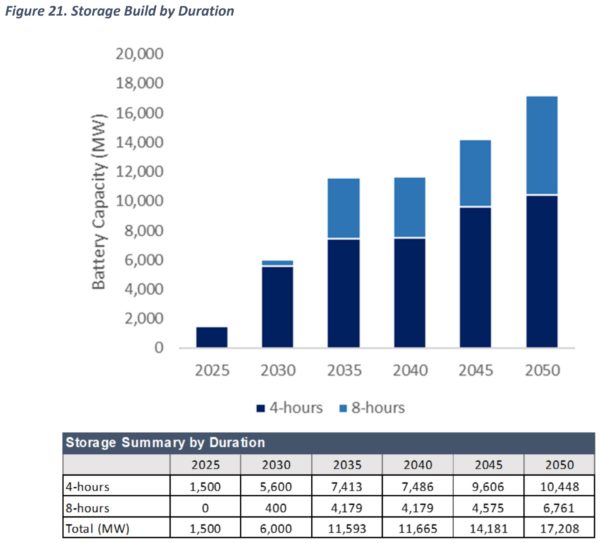
The majority of the 4.7 GW of added capacity, plus the existing 1.3 GW, is expected to be coupled with four hours of energy storage. However, the eight-hour duration product is expected to start growing by 2030, when the combined storage is approximately 25.6 GWh.
By 2030, 400 MW of this capacity might be of the eight-hour variety. And by 2035, the state sees just over 4.1 GW of eight hour duration energy storage and 7.4 GW of four hour energy storage.
By 2050, the state’s four-hour storage target reaches 10.4 GW with 41.2 GWh, and eight-hour storage reaches 6.7 GW with 53.6 GWhs. At that point, the Empire State’s total bulk energy storage deployments will approach 100 GWh.
The report also references 10-hour and longer duration storage projects, which will likely be a necessary part of delivering clean, stable energy in winter. No capacity projections were made for this asset class.
About 6 GW of energy storage capacity would meet approximately 25% of NYISO’s 2022 estimated winter peak demand of 23,893 MW, and 18% of NYISO’s 2022 summer estimated peak demand of 31,765 MW.
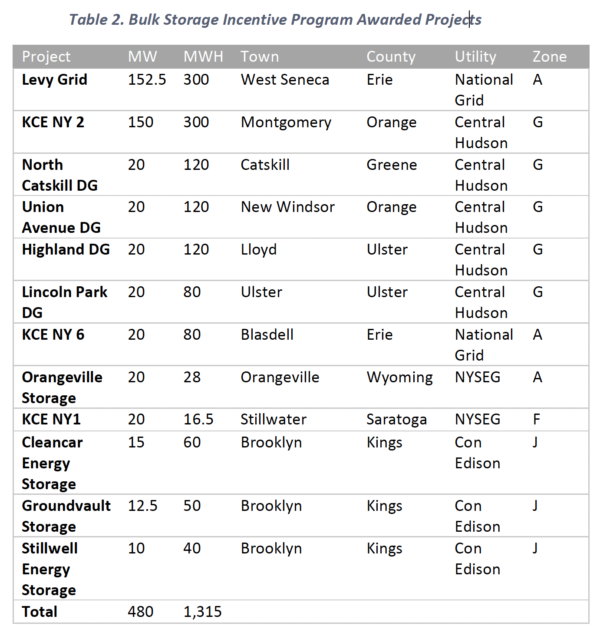
The document shows that while the state initially procured “580 MW and 1,654 MWh of energy storage, cancellations have brought these numbers down to 480 MW and 1,314 MWh.”
The state has also required utilities to study “the potential of high-value energy storage projects towards providing cost-effective transmission and distribution services not currently available through existing markets”.
The report also includes capacity beyond energy storage, predicting 59 GWac/~76 GWdc of solar power by 2050.
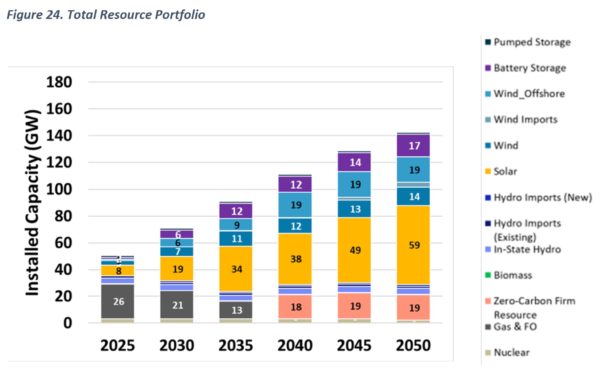
NYSERDA notes that 4.5 GW of peaking plants are located in the state, with a majority of the plants located in the highly populated New York City and Long Island region, whose grid is managed by utilities Con Edison and PSEG. The units have a 5% to 10% capacity factor. It is suggested that batteries could replace these plants without any reliability issues, and that the batteries would be eligible for an extra 10% adder, since they would be located within an IRA Energy Community.
Vehicle to Grid (V2G) will be modeled in the future. By 2035, all newly sold passenger cars, pickup trucks, and SUVs will be required to be zero emission.
The report also shows that while energy injections to the grid are not a primary use of EV batteries, (due to uncertain participation by EV owners), the capacity contained within EVs will not be automatically counted toward the 3 GW or 6 GW targets. However, V2G will be considered, as just 1% of EVs plugged into the grid would offer hundreds of megawatts of power. Most of that storage is located exactly where it is being used, since people tend to stay near their cars.
As of yet, the state has not finalized a financial structure to support the battery installations.
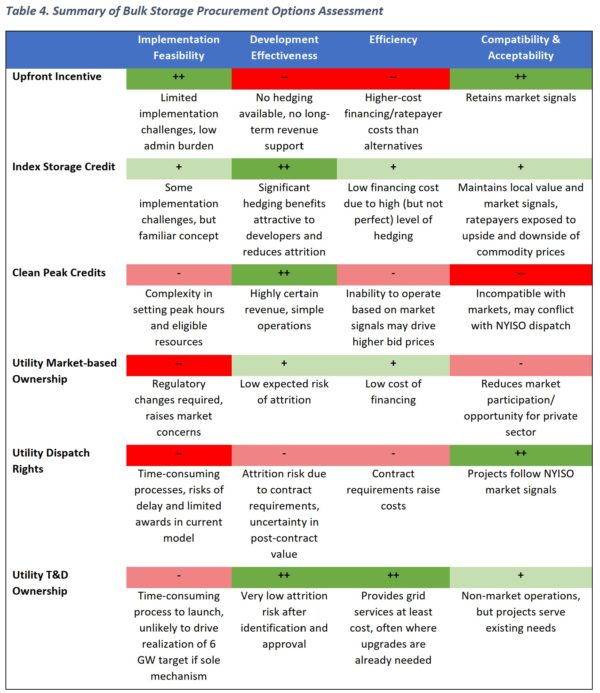
Six different types of programs are being considered:
- Upfront Incentive
- Index Storage Credit
- Clean Peak Credits (referencing the Massachusetts’ Clean Peak Standard program)
- Utility Market-based Ownership
- Utility Dispatch Rights
- Utility T&D Ownership
The previous bulk energy storage program offered an upfront incentive, and was sold out in a very short time.
Final design decisions for New York are expected in 2023.
This content is protected by copyright and may not be reused. If you want to cooperate with us and would like to reuse some of our content, please contact: editors@pv-magazine.com.
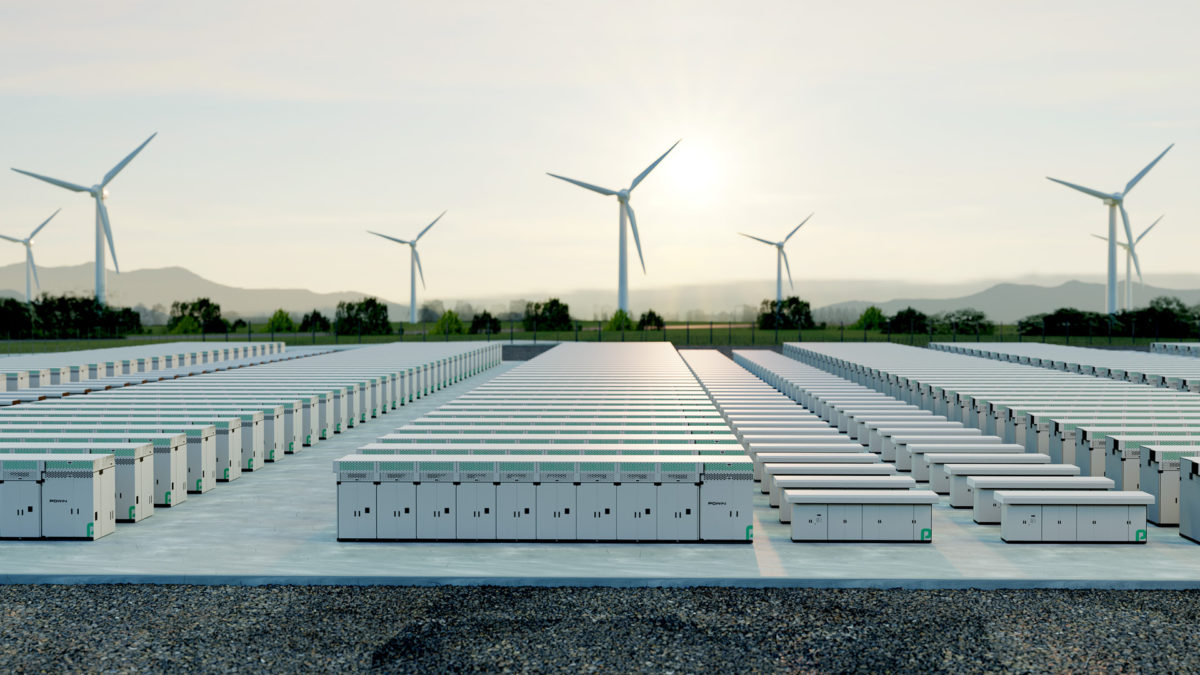







The Roadmap costs are presented relative to “incremental revenues” The document states that “For the proposed bulk storage procurement program, program costs are calculated as the incremental revenue, on top of revenue that storage assets can realize through commercial operation in the existing energy markets, that would allow such assets to reach their cost of capital.” The energy market expected costs are not clearly defined nor how those costs will eventually be picked up by New York consumers is not documented. It appears that the Hochul Administration goal is hide the expenditure of hundreds of billions of dollars under hundreds of programs and subsidies making it intentionally impossible to capture the total costs to consumers. The public story may be that the costs are less than the cost of a slice of pizza but the total cost of the energy storage roadmap is hidden from the public by design.